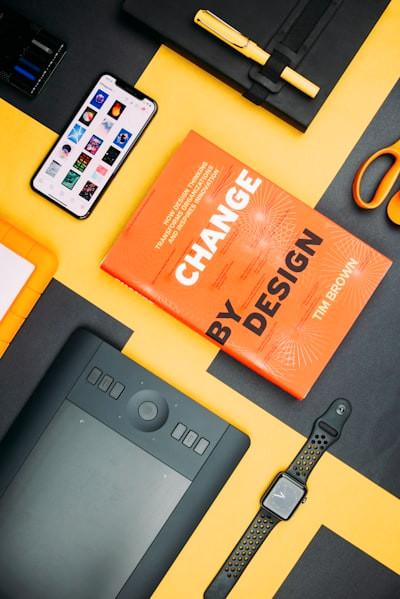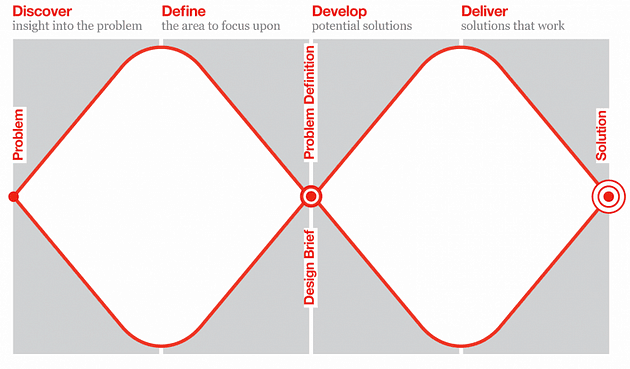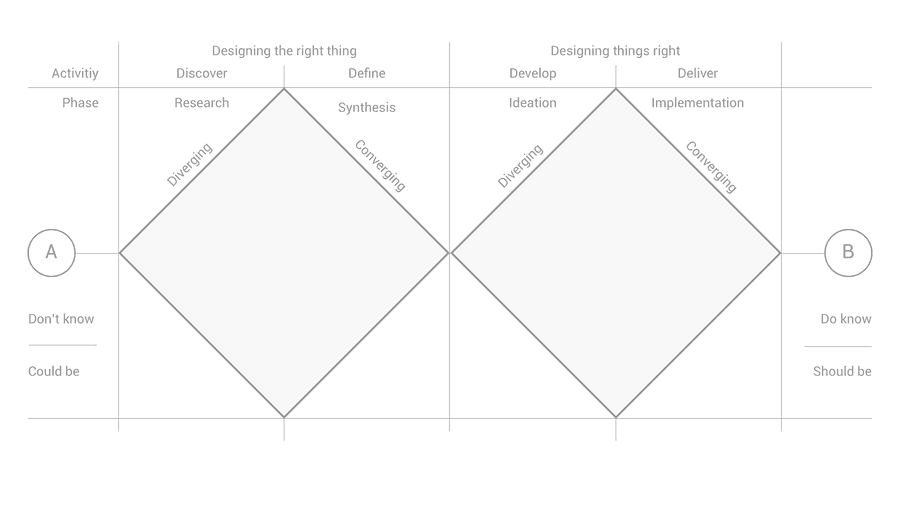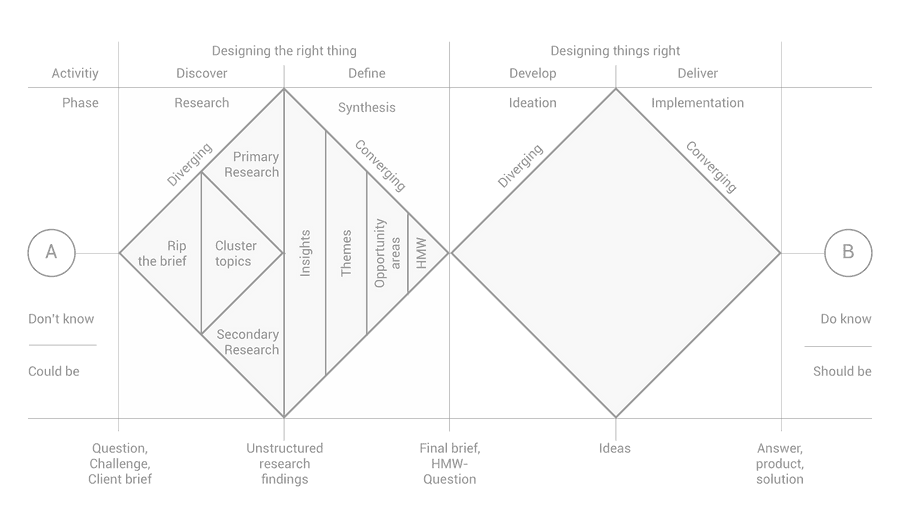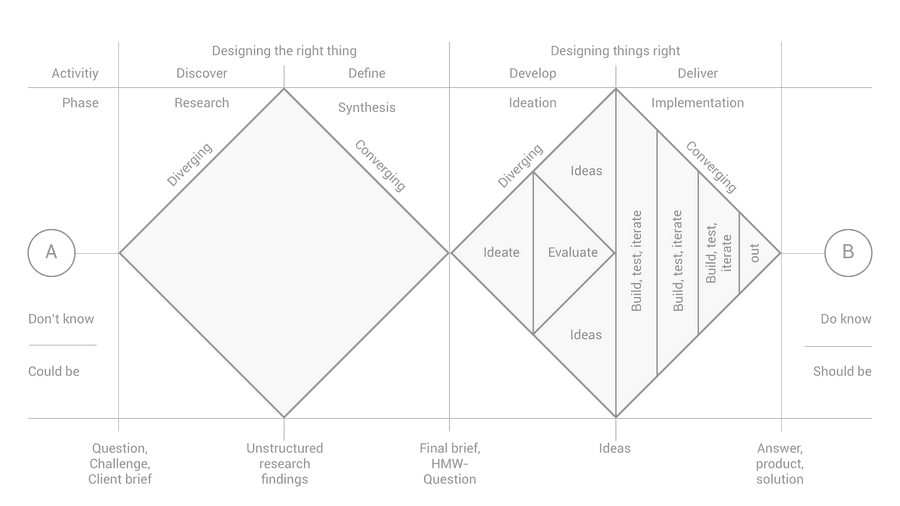How to apply a design thinking, HCD, UX or any creative process from scratch
Curated from: medium.com
14
Explore the World's Best Ideas
Join today and uncover 100+ curated journeys from 50+ topics. Unlock access to our mobile app with extensive features.
The Double Diamond revamped
- The British Design Council's Double Diamond conveys a design process that consists of four stages: Discovery, Definition, Development and Delivery.
- IDEO's human-centred design ideology defines human centred design as a creative approach to problem-solving that starts with people and ends with innovative solutions.
- @d.school’s Design Thinking process is a methodology for creative problem solving.
The double diamond revamped aims to provide designers with a tool and is based on these ideas.
37
221 reads
Understanding people
According to Don Norman, the human centred design process start with:
- a good understanding of people
- the needs that the design is intended to meet.
Various companies and organisations came up with models to provide structure to the process of human centred design (or design thinking.)
33
172 reads
Chilli Con Carne and the Double Diamond
When you cook a chilli con carne for the first time, you might start off with a recipe that you like. But once you've burned your tongue a few times, you tweak the original recipe to your own needs and taste.
That's why the Double Diamond process, initially released by the British Design Council, is used. This framework has good structure, clarity and dynamics.
30
127 reads
Point of departure and basics
The Double Diamond is a structured design approach to tackle challenges in four stages:
- Discover /Research — insight into the problem (diverging)
- Define/Synthesis — the area to focus upon (converging)
- Develop/ Ideation — potential solutions (diverging)
- Deliver /Implementation — solutions that work (converging)
The phases are either diverging (open up as much as possible) or converging (condensing or narrowing your ideas).
39
103 reads
Discover / Research
- Try to question the brief or your initial question by challenging every part. List as many elements as you can, find characteristics, define areas of interest. List places, people, experiences that are related and can be explored.
- Cluster your findings into topics to get an overview. You might have to limit yourself in terms of the scope you want to research.
- Dive into your research. Apply primary and secondary research methods.
This should result in a pile of unstructured research findings.
35
111 reads
Define / Synthesis
To make sense of your findings, you want to synthesise your research by applying the following steps:
- Download all your research.
- Cluster learnings and similarities to themes.
- Find insights(the consumer's motivations or frustrations) and build opportunity areas (a phrasing of the potential area of action).
- Create HMW questions (How Might We). These are tangible statements of what is to be done.
This should result in a revamped brief that clarifies or details the initial brief or contradicts it.
38
71 reads
Develop / Ideation
As you have deduced the actual question to solve or challenge, you start ideating.
- Ideation: You should approach ideation with an open mind and not limit yourself. Apply a "yes, and..." approach, not a "yes, but..."
- Evaluation: At the end of ideation, select your favourite ideas. Each team member votes for ideas or use feasibility matrices.
You ought to end up with a small number of ideas to prototype and test to find the best solution.
35
56 reads
Deliver / Implementation
Once you have a potential solution (or set of ideas), you want to evaluate the final one and the way it needs to be implemented. An agile approach can be used consisting of three steps:
- Build/Prototype
- Test/Analyse
- Iterate/Repeat
Aim for minimum viable products so that you can see if it solves the initial problem. Thereafter, you should be able to go out with your final solution or product.
36
73 reads
The Double Diamond framework is not the only approach
- The Double Diamond is just one approach. It's supposed to be challenged, questioned and iterated upon.
- The process is not linear. You need to be open to go back and forth at any point.
- The focus in this article is on the general structure of the process, not on all the individual tools and methods.
31
56 reads
IDEAS CURATED BY
Jenny Whitney's ideas are part of this journey:
Learn more about product with this collection
How to analyze churn data and make data-driven decisions
The importance of customer feedback
How to improve customer experience
Related collections
Similar ideas
20 ideas
What is Design Thinking?
ideou.com
5 ideas
Lecture 2 : What is the Design Process?
medium.com
8 ideas
Read & Learn
20x Faster
without
deepstash
with
deepstash
with
deepstash
Personalized microlearning
—
100+ Learning Journeys
—
Access to 200,000+ ideas
—
Access to the mobile app
—
Unlimited idea saving
—
—
Unlimited history
—
—
Unlimited listening to ideas
—
—
Downloading & offline access
—
—
Supercharge your mind with one idea per day
Enter your email and spend 1 minute every day to learn something new.
I agree to receive email updates
